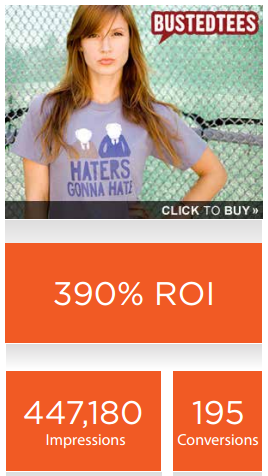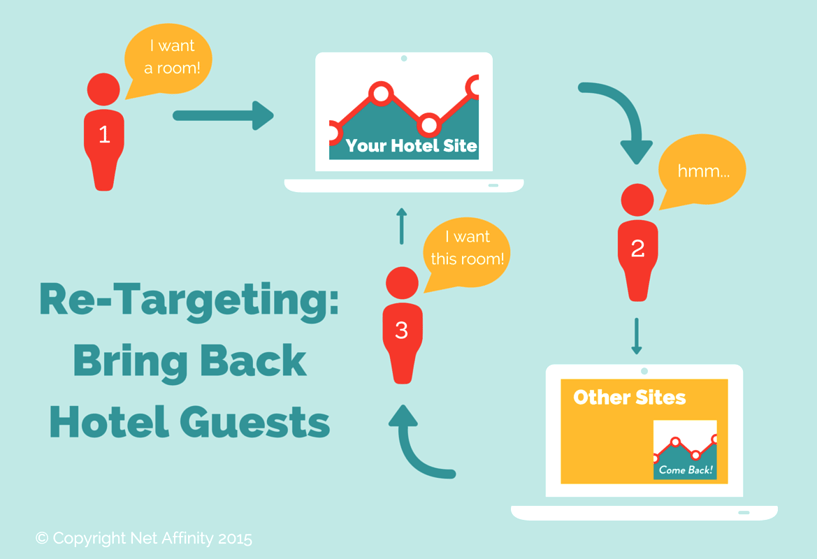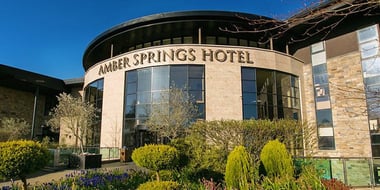Are you using retargeting as part of your hotel’s market strategy? If not, you’re missing out an a huge opportunity. Today, we’re going to take you through why and how to make your direct bookings soar through retargeting:
What is Retargeting?
Retargeting targets potential hotel guests who have already visited your hotel’s website by displaying advertisements for your hotel to them on other digital platforms. It’s easy to do – just install a code or pixel on your hotel website, either on the entire site or just one specific page, and you’re ready to get started.
When a person visits your hotel’s website, this code places a cookie in their browser. This cookie allows you retarget the visitor using ads on various channels, like search engines and social media.
Why is it Important?
On average across the hospitality industry, about 4% of the people who visit a hotel website, an OTA or an airline site decide to make a reservation. This means that 96% of them aren’t converting – and in most cases, it’s lower.
Imagine the revenue benefits you could achieve if only 3% or 4% more of your traffic turned from lookers to bookers.
Retargeting can help you with this. By using retargeting and experimenting with different marketing strategies, you’ll be able to ensure that more of your traffic converts.
The Biggest Benefits of Retargeting:
Gets the highest life in search volume
Comscore teamed up with Value Media to analyse 103 campaigns from 39 different advertisers covering 7 industries. They examined the lift in website visits and relevant search queries across six different media placement strategies. These strategies included audience targeting, contextual targeting, efficiency pricing, premium pricing, retargeting and run of network.
As you can see from the table, retargeting produced the highest lift in search queries at 1,046%.
You can target people based on their funnel stage
Retargeting works so well because you get to target people who recently visited your hotel’s website. Depending on their behaviour and the software you have, you can create unique marketing messages that can influence people who are solution or brand aware.
If you take the extra step of adding the code/pixel to every page in your marketing funnel instead of just your hotel’s home page, you can create even more specifically targeted ads.
For example, potential hotel guests who visited your hotel’s homepage can be targeted with ads that only have a logo and your hotel name or photo, because they are brand aware. Increasing this awareness means they will be more likely to visit your website again.
Those who visit a landing page for one of your special offers can be targeted with product aware adverts, where you display ads for the same landing page along with a call to action to book a room. If these don’t convert more visitors, you can try offering them additional discounts or upgrades.
Finally, those who already made a purchase can be targeted with ads for room upgrades and other upsell and cross-sell offers. The easiest way to know which people made a purchase is by placing the code/pixel on the thank you page they will be redirected to after making a purchase.
Make sure you set these ads to show as soon as possible after visitors leave your website. If you wait too long, they could forget about you or make a different booking.
Helps increase conversions:
Cart abandonment is a common problem with online e-commerce in all industries. It occurs when visitors leave a site part of the way through the purchase process – for example, when they reach the payment page. According to Baymard Institute, the average cart abandonment rate hovers around 68.63%.
One way to counter this is by using email retargeting. You send an email to the potential guest who added the room to the cart, and ask them if they’d like to complete their order. You can even offer a small discount. Inform them that the discount is only available for a few hours, as scarcity can entice them further.
For this to work, you need to make sure you get their email addresses as early as possible.
The main problem with email retargeting is frequency. You cannot email subscribers offers and deals constantly – people will unsubscribe as fast as they can. Instead, you can use ad retargeting to get the same message in front of them in a variety of ways.
Many social platforms, like Facebook for example, give you the option to upload your email subscribers data so that you can target them with ads. This way you can inform them about the offer with both emails and in their newsfeed, to keep their mind on your hotel and increase conversions.
Important tip: Don’t overdo it! Limit the number of times the ad is displayed as you don’t want them to get frustrated with your ads. You can accomplish this with frequency capping on Google AdWords. A good rule of thumb is no more than 2 or 3 times a day.
Getting Started with Retargeting:
Now that you know the importance of retargeting for your hotels, we’re going to discuss how to get started with two types of retargeting: email retargeting and direct retargeting.
1. Email Retargeting:
As mentioned above, email addresses can be used  to retarget in two way. One method is sending emails to people who abandoned mid-booking. The other is where your subscribers see ads on other networks.
to retarget in two way. One method is sending emails to people who abandoned mid-booking. The other is where your subscribers see ads on other networks.
Both have known to produce amazing results:
Le Parc Suite found that 94.5% of their website visitors abandoned after checking the price. To counteract this, they used reservation email retargeting and recovered tens of thousands in revenue. It improved their return on ad spend (ROAS) by 1710%.
BustedTees served ads to their list and they got 447,180 ad impressions resulting in 195 total conversions. The average order value was $40. They got an ROI of 380%.
Setting up email retargeting for cart abandonment:
We won’t go into the exact details for how to set up the email responses for cart abandonment, because it all depends on the type of payment gateway, shopping cart and email marketing software you’re using. Instead, we’ll cover the types of emails you should create and when to do it. Most email tools have settings and integrations that will let you easily set up a series of automatic messages.
The first email:
In the first email, you primarily want to send a basic reminder without attempting to pressure the potential hotel guest into making a purchase.
Here’s a sample of the kind of template we offer our clients:
Of course, make sure you personalize your email by adding the room name, hotel name and the name of the employee so that guests know a real person sent it!
Try to send this email within three hours – Business Insider found that emails sent this early after someone abandons a cart have an average open rate of 40% and a click through rate of 20%.
The second email:
In the second email, you could use a similar message as the first, but you can use other tactics like scarcity to convince guests to make the booking. You could tell them how many rooms are left and that people are booking them quickly.
This can be sent the next day.
The third email:
In the third email, your message should be similar to the previous two, but you can sweeten the deal by offering a discount. Include the code so that they can still take advantage of the discount if they want to book rooms at different dates.
Send this on the second or third day.
Make sure the autoresponder series is halted in the event that one of the emails does the job. If you’re feeling advanced, you can then move them onto a different series that upsells and cross sells products/services.
Smileycookie.com was able to use a similar strategy to recapture 29% of abandoned carts. Check out the case study, as it details the techniques they used to capture the email address early on and the emails they used to get abandoners to take action.
Email retargeting for social platforms:
Using your email addresses to reach people on social platforms is a great way to get the same message and offers to your list in a way that’s less intrusive than constant emails. It can reduce your unsubscription rate.
Depending on your email automation software, you will need to either download and then upload your list manually or you might have an integration which automatically does this for you.
For best results, try using email software that lets you track subscribers’ activities and move them between lists based on the emails they open or the links they click. Depending on the list they are subscribed to, you can display more focused ads.
For example, let’s say someone signs up to your general email list. However, over the course of a few months you send them several emails on topics like the different types of rooms and your spa and restaurants. However, they only open the emails for spas and upscale rooms. Now that you have a better idea of what they’re interested in, they can be moved to lists specifically for your spa and executive suites.
2. Direct Retargeting with Search and Social Ads:
Only a small fraction of your website visitors will give you their email address.
The solution here is to use direct retargeting, where you install a pixel from an advertising platform (e.g. Google AdWords) on your site. When the potential guests visit your site, the pixel will install a cookie in their browser and then you can use the advertising platform to retarget the visitor and get them to visit your website again.
The above image is a screenshot of a Facebook ad seen by Amanda Sibley of Hubspot. She visited the site, Jetsetter, as she was planning a trip to Greece. Then, Jetsetter served her an ad on Facebook that advertised villas and mansions near Santorini Island on Greece.
The ad offered a discount, and included a call to action which convinced Amanda to click on the ad.
The best part about the ad was its specificity. It didn’t just say book a hotel with Jetsetter, but to check them out in a specific region she was interested in travelling to. These types of laser-focused ads convert better, because you’re honing in on specific interests.
You can do this by placing pixels/codes on the most important pages of your website, like the rooms pages instead of just the home page. You can then serve different ads to people who visit your ‘Deluxe Rooms Page’ than you do to those who visit your ‘Basic Rooms Page’.
The platforms will also offer you a pixel to check if your ads converted. This will help you measure your ROI, so add them too!
Make sure to get these ads in front of people who recently visited your website (in hours or days) instead of waiting too long – they might end up booking the room elsewhere.
Conclusion
As you have read above, your retargeting strategy should include both email retargeting and direct retargeting. This will give your conversion rate a nice boost without too much cost, and let you show guests exactly what you know they want to see.
How do you use retargeting to market your hotel? Did we forget to list any important tips? Please leave your comments below.







